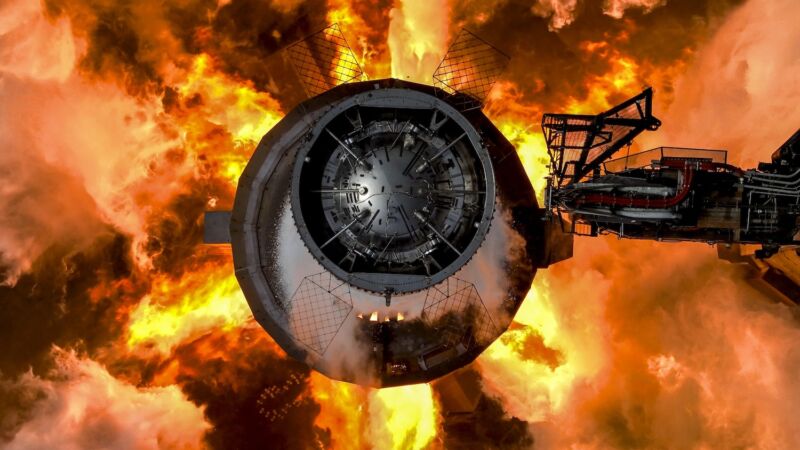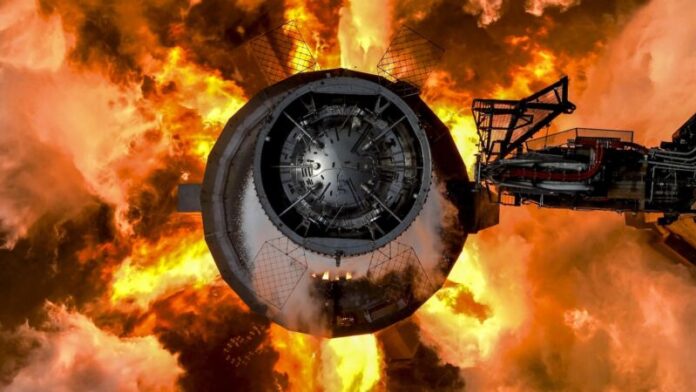
Enlarge / A drone shot looking down on SpaceX's Super Heavy booster during a test-firing of its 33 Raptor engines Monday. (credit: SpaceX)
It's unclear yet how long SpaceX's workhorse Falcon 9 rocket will remain grounded as engineers investigate a rare launch failure last week, but the next test flight of the company's next-generation Starship vehicle appears to be on track for liftoff next month.
On Monday, SpaceX test-fired the 33 Raptor engines on the Starship rocket's Super Heavy booster at the company's Starbase facility in South Texas. The methane-fueled engines fired for about eight seconds, long enough for SpaceX engineers to verify all systems functioned normally. At full power, the 33 engines generated nearly 17 million pounds of thrust, twice the power output of NASA's iconic Saturn V Moon rocket.
SpaceX confirmed the static fire test reached its full duration, and teams drained methane and liquid oxygen from the rocket, known as Booster 12 in the company's inventory of ships and boosters. The upper stage for the next Starship test flight, known as Ship 30, completed the static fire of its six Raptor engines in May.
Read 19 remaining paragraphs | Comments
Ars Technica - All contentContinue reading/original-link]




